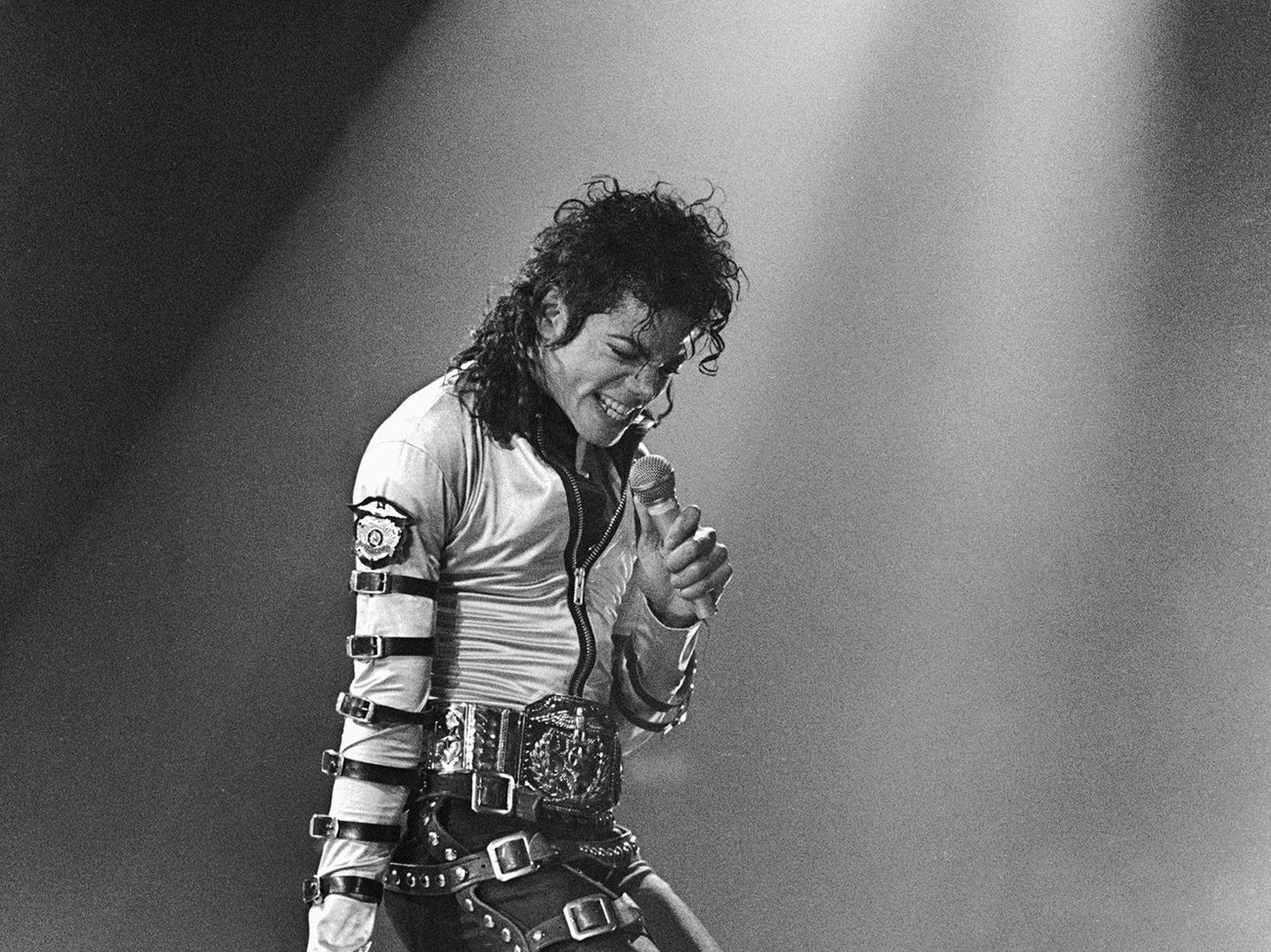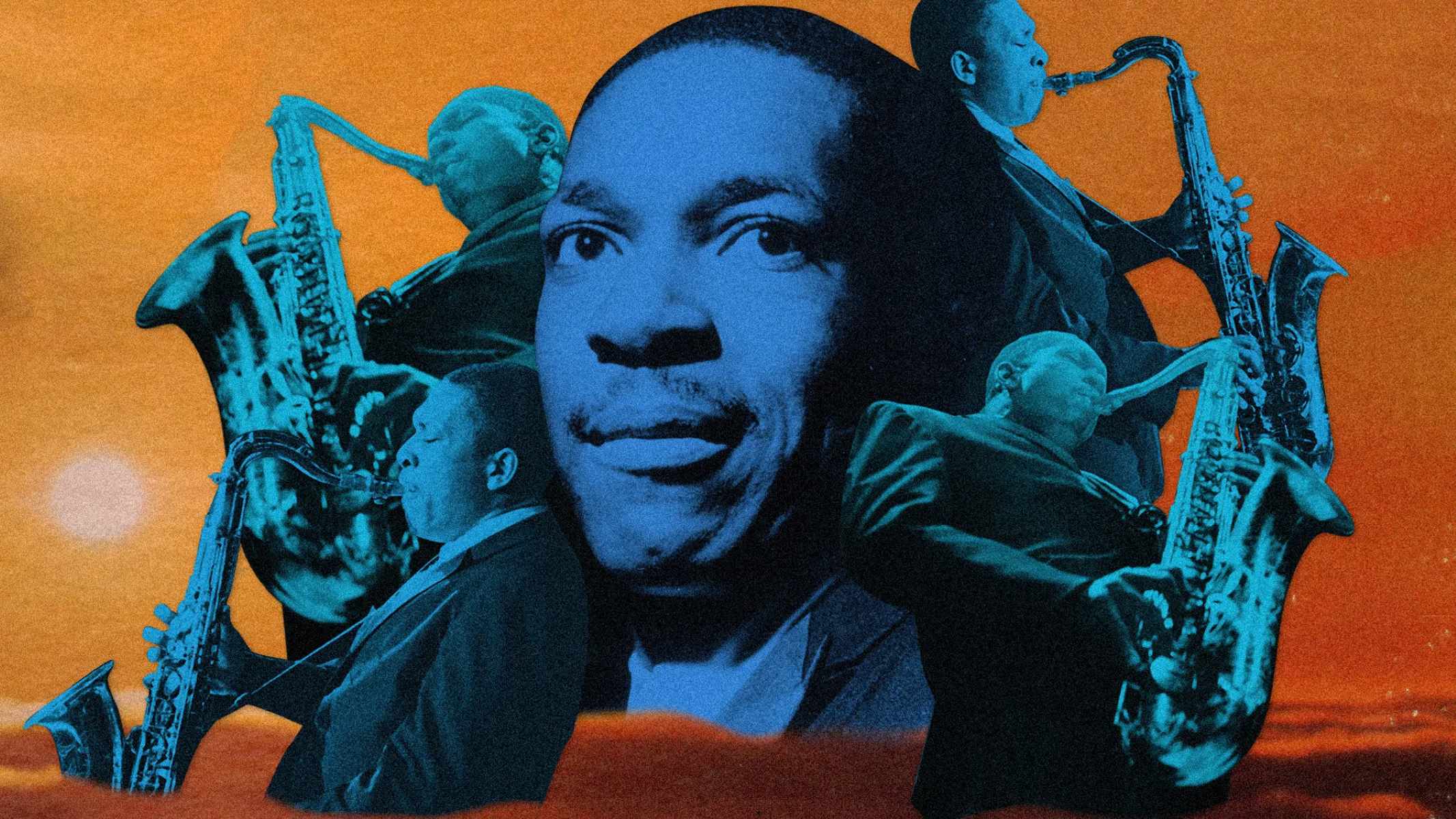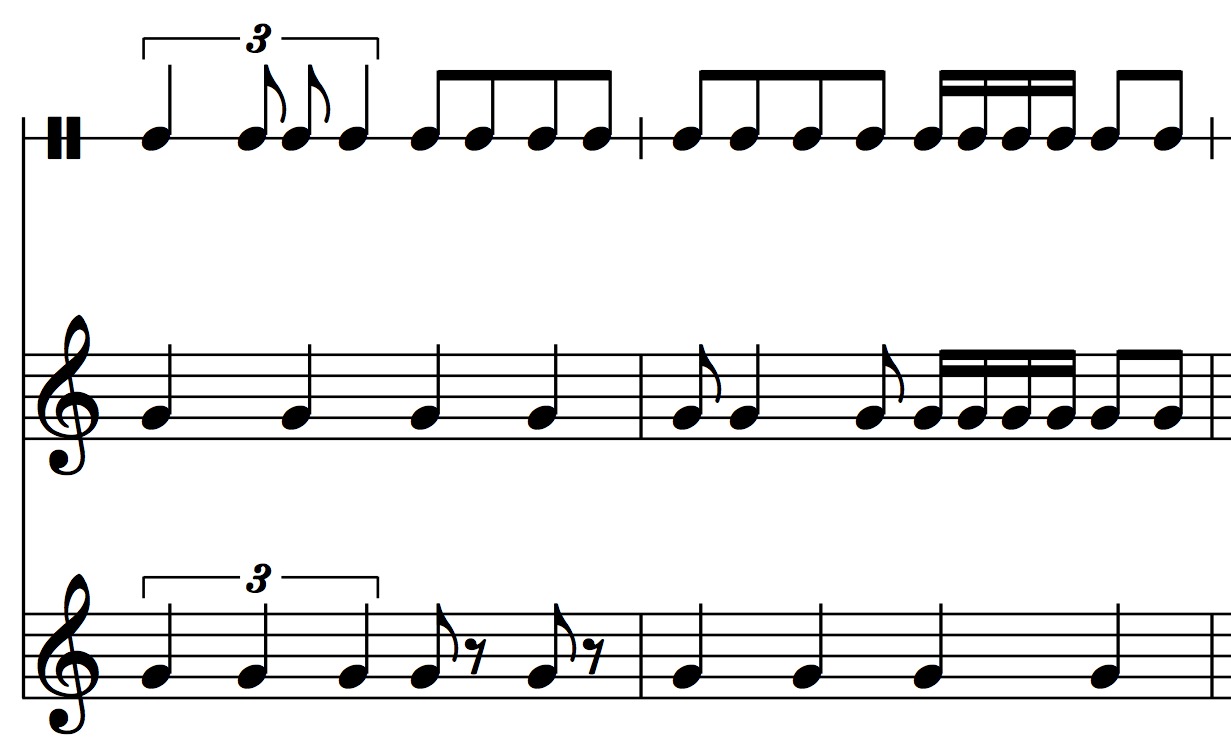Home>Events & Info>Music Therapy>What Is Rhythmic Entrainment And Why Is It Important In Music Therapy?


Music Therapy
What Is Rhythmic Entrainment And Why Is It Important In Music Therapy?
Published: February 2, 2024
Discover the importance of rhythmic entrainment in music therapy and how it enhances treatment outcomes. Explore the benefits of music therapy for various conditions and learn more about this powerful healing practice.
(Many of the links in this article redirect to a specific reviewed product. Your purchase of these products through affiliate links helps to generate commission for AudioLover.com, at no extra cost. Learn more)
Table of Contents
- Introduction
- Definition of Rhythmic Entrainment
- Importance of Rhythmic Entrainment in Music Therapy
- How Rhythmic Entrainment Works in Music Therapy
- Benefits of Rhythmic Entrainment in Music Therapy
- Case Studies and Examples
- Challenges and Limitations of Rhythmic Entrainment in Music Therapy
- Future Directions and Research Opportunities
- Conclusion
Introduction
Music has long been recognized for its therapeutic effects on the mind, body, and soul. The power of music to evoke emotions and stimulate various physiological responses has made it a valuable tool in the field of therapy. One particular aspect of music therapy that has gained significant attention is rhythmic entrainment.
Rhythmic entrainment refers to the process by which an individual synchronizes their body movements, physiological responses, and mental states to the rhythm of music. It involves aligning one’s heartbeat, breathing, and motor movements to the beat and tempo of the music being played. This natural tendency to entrain to a rhythm can be harnessed in therapeutic settings to achieve numerous benefits.
In this article, we will delve into the world of rhythmic entrainment in music therapy. We will explore the definition, importance, and various applications of rhythmic entrainment in enhancing the therapeutic experience. Additionally, we will discuss the benefits, case studies, challenges, and future research directions related to this powerful aspect of music therapy.
The concept of rhythmic entrainment is rooted in the fundamental human instinct to move and synchronize with rhythms. From infancy, we are naturally drawn to the rhythm of our mother’s heartbeat and the lullabies sung to us. Our bodies intuitively respond to rhythm, and this innate connection forms the basis of rhythmic entrainment in music therapy.
Throughout history, cultures across the world have used rhythmic entrainment for healing and spiritual purposes. Indigenous cultures have incorporated drumming, chanting, and dancing rituals to induce altered states of consciousness and promote healing. The therapeutic potential of rhythmic entrainment has now been scientifically validated, opening new avenues for its application in various therapeutic modalities, particularly music therapy.
Definition of Rhythmic Entrainment
Rhythmic entrainment, in the context of music therapy, refers to the process of aligning one’s internal rhythms and movements with the external rhythm and beat of music. It involves the synchronization of physiological responses, such as heartbeat and breathing, as well as motor movements, to the rhythm that is being played.
When a person engages in rhythmic entrainment, their body and mind naturally respond to the beat, tempo, and rhythm of the music. It is as if the individual becomes one with the music, allowing it to guide and shape their movements and internal states. This entrainment can occur consciously or unconsciously, depending on the individual’s level of engagement and intention.
Rhythmic entrainment is not limited to a specific type of music or rhythm. It can occur with various musical genres, styles, and tempos. Whether it is the soothing rhythm of a soft ballad or the energetic beat of a drum circle, rhythmic entrainment can be experienced in a wide range of musical contexts.
This phenomenon of rhythmic entrainment is deeply rooted in neurophysiology. The human brain has a natural affinity for rhythmic patterns, which can be observed through the activation of specific brain regions responsible for processing rhythm. When we listen to music with a strong beat, our brain tends to synchronize its neural firing with the beat, creating a sense of alignment and connection.
Moreover, rhythmic entrainment extends beyond just the physiological response. It also encompasses emotional and cognitive aspects. The rhythm of the music can elicit particular emotions and affect the individual’s mood, leading to a holistic experience that engages the mind, body, and emotions.
In music therapy, rhythmic entrainment is used intentionally to facilitate therapeutic goals. By harnessing the power of rhythmic entrainment, music therapists can create a safe and supportive environment where individuals can explore and express themselves, develop self-awareness, improve physical coordination, and regulate emotions.
It is important to note that rhythmic entrainment in music therapy is not confined to the individual alone. It can also occur in group settings, where participants synchronize their movements and energies with each other, creating a sense of unity and collective experience.
Importance of Rhythmic Entrainment in Music Therapy
Rhythmic entrainment plays a crucial role in the field of music therapy, offering a wide range of benefits for individuals of all ages and abilities. It provides a unique and effective approach to therapeutic intervention, enhancing the therapeutic experience in several ways.
One of the primary reasons for the importance of rhythmic entrainment in music therapy is its ability to regulate and synchronize physiological responses. When a person engages in rhythmic movements aligned with the music, their heart rate and breathing patterns tend to naturally synchronize with the rhythm. This synchronization can have a calming effect on the nervous system, reducing stress and promoting relaxation.
Rhythmic entrainment also promotes the development of motor skills and coordination. By engaging in rhythmic movements, individuals can enhance their proprioception and kinesthetic awareness. This is particularly beneficial for individuals with motor impairments or neurological conditions, as it can improve their motor control and overall physical functioning.
Furthermore, rhythmic entrainment has the power to evoke and regulate emotions. Different rhythms and musical elements can elicit specific emotional responses in individuals. By incorporating specific rhythms or musical patterns, music therapists can help individuals explore, express, and regulate their emotions in a therapeutic context. This can be particularly beneficial for individuals experiencing anxiety, depression, or trauma.
In addition, rhythmic entrainment promotes social connection and communication. When individuals engage in rhythmic activities or participate in group rhythmic experiences, it fosters a sense of unity and shared experience. It allows for non-verbal communication and promotes social interaction, making it particularly effective for individuals with social or communication difficulties.
Rhythmic entrainment also enhances cognitive functioning. When individuals engage in rhythmic movements, it activates various cognitive processes such as attention, memory, and executive functioning. This can lead to improved focus, concentration, and cognitive skills.
Overall, the importance of rhythmic entrainment in music therapy lies in its ability to provide a holistic and integrated approach to therapy. It addresses the physical, emotional, social, and cognitive needs of individuals, promoting overall well-being and improving quality of life.
By utilizing rhythmic entrainment, music therapists can create a dynamic and engaging therapeutic environment that taps into the inherent power of music to heal, connect, and transform.
How Rhythmic Entrainment Works in Music Therapy
Rhythmic entrainment works in music therapy by harnessing the innate connection between rhythm and human physiology, emotions, and cognition. Music therapists utilize various techniques and interventions to facilitate rhythmic entrainment and create a therapeutic experience that promotes healing and self-expression.
Firstly, the music therapist selects appropriate music that has a clear and steady rhythm. This rhythm serves as the foundation for rhythmic entrainment. The tempo, beat, and overall structure of the chosen music greatly influence the individual’s response and level of engagement.
Once the music is selected, the music therapist guides the individual or group through rhythmic activities. These activities may include clapping, tapping, drumming, dancing, or playing instruments. The therapist sets the rhythm or establishes a rhythmic pattern, and the participants synchronize their movements and responses to match the rhythm.
In individual therapy sessions, the music therapist may use tactile cues, such as tapping on the individual’s body or guiding their movements, to facilitate rhythmic entrainment. This tactile stimulation helps the individual internalize the rhythm and establish a stronger connection between their body and the music.
In group therapy sessions, rhythmic entrainment is enhanced through interpersonal dynamics and shared experiences. Participants synchronize their movements and energies with each other, creating a collective rhythmic experience. This promotes a sense of unity, connection, and social interaction.
As individuals engage in rhythmic entrainment, their physiological responses begin to synchronize with the rhythm. Their heart rate, breathing, and even brain activity align with the beat and tempo of the music. This synchronization can have a profound impact on the individual’s state of relaxation, arousal, and emotional well-being.
Moreover, rhythmic entrainment stimulates various brain regions involved in processing rhythm, movement, and emotions. The brain’s reward system is activated, releasing neurotransmitters such as dopamine and endorphins, which contribute to feelings of pleasure, motivation, and emotional well-being.
The therapeutic benefits of rhythmic entrainment in music therapy are further enhanced by the incorporation of verbal processing and reflection. After engaging in rhythmic activities, individuals are encouraged to verbally express their experiences and emotions related to the music and rhythmic entrainment. This verbal processing facilitates self-awareness, insight, and emotional regulation.
Overall, rhythmic entrainment works in music therapy by providing a structured and rhythmic framework through which individuals can connect with themselves, others, and the healing potential of music. It taps into the deep-rooted connection between rhythm and human physiology, emotions, and cognition, facilitating a transformative and therapeutic experience.
Benefits of Rhythmic Entrainment in Music Therapy
Rhythmic entrainment in music therapy offers a wide range of benefits that contribute to the overall well-being and therapeutic progress of individuals. These benefits extend to various domains, including physical, emotional, cognitive, and social aspects. Let’s explore some of the key advantages of incorporating rhythmic entrainment in music therapy:
- Physical Benefits: Rhythmic entrainment promotes physical coordination, motor skills development, and balance. By engaging in rhythmic movements, individuals improve their proprioception and kinesthetic awareness. This is particularly helpful for individuals with motor impairments or neurological conditions, as it can enhance their motor control and physical functioning.
- Emotional Regulation: Rhythmic entrainment has a profound impact on emotional well-being. It can help individuals to regulate their emotions and manage stress or anxiety. The rhythmic and predictable nature of the music provides a sense of stability and grounding, allowing individuals to express and release emotions in a safe and structured manner.
- Increased Relaxation: Rhythmic entrainment induces a state of relaxation and calmness. As individuals synchronize their movements and physiological responses with the rhythm, their heart rate slows down, breathing becomes deeper and more regulated, and muscle tension is reduced. This relaxation response can help alleviate symptoms of anxiety, depression, and chronic pain.
- Cognitive Enhancement: Engaging in rhythmic entrainment stimulates cognitive processes such as attention, memory, and executive functioning. By following and internalizing the rhythm, individuals improve their focus, concentration, and cognitive flexibility. This can have a positive impact on academic performance, problem-solving skills, and overall cognitive abilities.
- Social Interaction: Group rhythmic activities provide opportunities for social interaction and collective experience. When individuals synchronize their movements and energies with others, it fosters a sense of unity and connection. This can be particularly beneficial for individuals with social or communication difficulties, as it promotes non-verbal communication, cooperation, and a sense of belonging.
- Self-expression: Rhythmic entrainment allows individuals to express themselves creatively and authentically. Through rhythmic movements and engagement with the music, individuals can release emotions, communicate non-verbally, and convey their inner experiences. This fosters self-expression, self-discovery, and a sense of empowerment.
These are just a few of the many benefits that rhythmic entrainment in music therapy can offer. Its holistic approach addresses the interconnectedness of mind, body, and emotions, providing a powerful tool for therapeutic intervention and personal growth.
Case Studies and Examples
There have been numerous case studies and real-life examples that showcase the effectiveness of rhythmic entrainment in music therapy. These cases highlight the transformative power of rhythmic activities and demonstrate the positive impact it can have on individuals of various ages and with different conditions. Let’s explore some notable examples:
Case Study 1: A young boy with Autism Spectrum Disorder (ASD) struggles with social communication and sensory processing. Through rhythmic drumming activities in music therapy, he learns to synchronize his movements with the beat of the drum. Over time, he gains confidence, improves his motor coordination, and shows increased engagement in social interactions.
Case Study 2: An elderly woman with Parkinson’s Disease experiences symptoms such as tremors and difficulty with movement. By engaging in rhythmic gait training exercises in music therapy, she learns to synchronize her walking movements with a rhythmic pattern. As a result, her gait becomes more steady, fluid, and coordinated, improving her overall mobility and quality of life.
Case Study 3: A teenager with severe anxiety finds it challenging to regulate his emotions and cope with stress. In music therapy sessions incorporating rhythmic entrainment, he learns to follow the rhythm of the music and engage in synchronized movement activities. This helps him to release tension, regulate his breathing, and reduce anxiety symptoms, leading to improved emotional well-being.
Example 1: In a group music therapy session for children with developmental delays, rhythmic entrainment is used to facilitate social interaction skills. By engaging in rhythmic activities together, such as circle drumming, the children learn to synchronize their movements, take turns, and respond to the rhythmic cues of others. This promotes communication, cooperation, and a sense of belonging within the group.
Example 2: A music therapist uses rhythmic entrainment techniques with individuals experiencing chronic pain. By engaging in guided rhythmic breathing exercises and incorporating relaxation music with a slow and steady beat, the individuals experience a reduction in pain intensity, improved relaxation response, and increased overall well-being.
These case studies and examples demonstrate the versatility and effectiveness of rhythmic entrainment in music therapy. With its ability to address a wide variety of needs and conditions, rhythmic entrainment continues to be a valuable tool in helping individuals achieve therapeutic goals and improve their overall quality of life.
Challenges and Limitations of Rhythmic Entrainment in Music Therapy
While rhythmic entrainment is a powerful and effective approach in music therapy, there are certain challenges and limitations that need to be considered. These factors can impact the implementation and outcomes of rhythmic entrainment interventions. Let’s explore some of the common challenges and limitations:
- Individual Variability: The response to rhythmic entrainment can vary significantly from person to person. Each individual may have different preferences, abilities, and levels of engagement. It is important for music therapists to customize their approach and adapt interventions based on individual needs and capabilities.
- Attention and Focus: Maintaining focus and attention throughout rhythmic entrainment activities can be challenging, especially for individuals with attention deficits or cognitive impairments. Music therapists need to employ various strategies such as visual cues, simplified rhythms, and frequent breaks to support sustained engagement.
- Sensory Sensitivities: Some individuals may have sensory sensitivities that can affect their response to rhythmic entrainment. Certain frequencies, intensities, or patterns of rhythmic stimulation may become overwhelming or uncomfortable. It is crucial for music therapists to be aware of and accommodate individual sensory needs during the interventions.
- Limited Musical Aptitude: Not all individuals have a musical background or innate sense of rhythm. Some individuals may struggle to follow or synchronize with the beat, which can impact their ability to fully engage in rhythmic entrainment activities. Patient and differentiated interventions can help individuals develop rhythmic skills over time.
- Physical Limitations: Rhythmic entrainment may be challenging for individuals with physical limitations or motor impairments. Certain movements or activities may not be accessible or comfortable for everyone. It is important to modify activities and provide alternative ways for individuals to engage in rhythmic entrainment, such as through vocalizations or simple gestures.
- Generalization to Everyday Life: While rhythmic entrainment can yield positive outcomes within the therapy context, generalizing its effects to everyday life activities and situations can be a challenge. Individuals may have difficulties transferring the skills and benefits gained from rhythmic entrainment to their daily routines or social interactions. Continued support and practice outside of therapy sessions are essential for maximizing the transfer of skills.
It is important for music therapists to acknowledge these challenges and limitations of rhythmic entrainment and adjust their interventions accordingly. By understanding individual needs, adapting interventions, and providing a supportive and inclusive environment, music therapists can help individuals overcome these limitations and harness the therapeutic potential of rhythmic entrainment.
Future Directions and Research Opportunities
Rhythmic entrainment in music therapy has shown great promise and effectiveness in various therapeutic contexts. As the field continues to evolve, there are several future directions and research opportunities that can further enhance our understanding and utilization of rhythmic entrainment. Here are some areas of focus for future exploration:
- Neuroscientific Investigations: Further research into the neurophysiological mechanisms underlying rhythmic entrainment can provide valuable insights into how music affects the brain and body. Advanced neuroimaging techniques, such as functional magnetic resonance imaging (fMRI) and electroencephalography (EEG), can help map brain activation patterns and understand the neural correlates of rhythmic entrainment in music therapy.
- Evidence-based Practice: Conducting rigorous clinical studies and systematic reviews can strengthen the evidence base for the effectiveness of rhythmic entrainment in different populations and therapeutic contexts. Large-scale randomized controlled trials and meta-analyses can provide valuable insights into the specific therapeutic outcomes and optimize the implementation of rhythmic entrainment interventions.
- Technology and Innovation: Exploring the integration of technology, such as virtual reality (VR) and augmented reality (AR), with rhythmic entrainment can open new possibilities in music therapy. Virtual environments and interactive applications can enhance engagement, provide additional sensory stimulation, and expand the reach of rhythmic entrainment interventions beyond traditional therapy settings.
- Culture and Diversity: Investigating the cultural and contextual factors that influence rhythmic entrainment in music therapy is important for cultural competence and inclusivity in practice. Researching the impact of different cultural rhythms, musical styles, and approaches to rhythm can help tailor interventions to specific cultural groups and ensure cultural sensitivity and relevance in therapeutic settings.
- Developmental Applications: Exploring the developmental aspects of rhythmic entrainment in music therapy can shed light on its efficacy for children at different stages of development. Research can focus on understanding the impact of rhythmic entrainment on early childhood development, social-emotional skills, and cognitive processes, as well as its potential for early intervention in developmental disorders.
- Long-term Effects and Maintenance: Investigating the long-term effects and maintenance of rhythmic entrainment interventions is essential for sustainable outcomes. Longitudinal studies can help determine the duration of intervention effects, identify factors that contribute to maintenance of therapeutic gains, and inform strategies for integrating rhythmic entrainment practices into individuals’ daily lives beyond the therapy setting.
By addressing these future directions and research opportunities, we can further enhance the understanding, knowledge, and application of rhythmic entrainment in music therapy. This will ultimately contribute to improving the efficacy and accessibility of rhythmic entrainment interventions, enabling music therapists to provide the most effective and personalized care to their clients.
Conclusion
Rhythmic entrainment holds immense potential in the field of music therapy, offering a profound and transformative experience for individuals seeking therapeutic support. This powerful technique harnesses the natural human inclination to synchronize with rhythm and music, providing a means to enhance physical coordination, emotional regulation, cognitive functioning, social interaction, and overall well-being.
Throughout this article, we have explored the definition and importance of rhythmic entrainment in music therapy. We have seen how rhythmic entrainment works by aligning internal rhythms and movements with external musical rhythms, creating a harmonious and synchronized experience. Through various case studies and examples, we have witnessed the positive impact of rhythmic entrainment on individuals of all ages and with different conditions.
However, it is important to acknowledge the challenges and limitations of rhythmic entrainment in music therapy, such as individual variability, attention and focus issues, sensory sensitivities, and potential difficulties in generalizing the effects to everyday life. By understanding and addressing these challenges, music therapists can tailor interventions to suit individual needs and maximize the benefits of rhythmic entrainment.
Looking to the future, there are exciting research opportunities and directions that can further enhance our understanding and application of rhythmic entrainment. Exploring its neuroscientific underpinnings, evidence-based practice, technological integration, cultural relevance, developmental applications, and long-term effects can expand the possibilities for rhythmic entrainment in music therapy.
In conclusion, rhythmic entrainment has emerged as a powerful therapeutic tool within music therapy. Its ability to synchronize mind, body, and emotions offers a holistic approach to healing and personal growth. By incorporating rhythmic entrainment techniques and interventions into practice, music therapists can create a safe and supportive space for individuals to explore, express, and transform themselves through the universal language of music.











